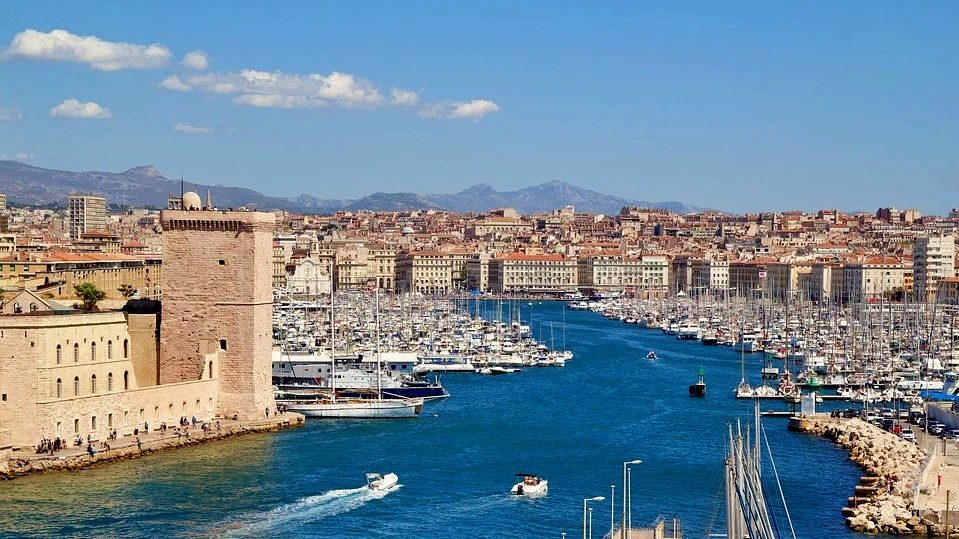Cezanne, the Master of Provence
The new digital and immersive exhibition in the Carrières de Lumières will present Cezanne’s most significant works, such as his still lifes of apples, The Card Players (1890–95), and The Great Bathers (circa 1906). A self-taught painter who produced 900 canvases and 400 watercolours, Cezanne (1839– 1906) painted portraits, still lifes, landscapes, and historical scenes … and created many versions of a single theme, as he endlessly experimented with the possibilities of pictorial representation.

Paul Cezanne :Pommes et oranges,1895–1900, huile sur toile, 74 x 93 cm, RF 1972, musée d’Orsay, Paris, © akg-images / Erich LessingInitially rejected at the Salon and later recognised by his contemporaries, at a retrospective held in 1895 by Ambroise Vollard, Cezanne is now considered the pioneer of modernism. Strongly influenced by Delacroix and Courbet at the beginning of his career, he subsequently abandoned studio work and shifted towards Impressionism, following Pissarro’s example and painting in the open air.
His unique construction of form and use of colour, and his tendency towards abstraction led him to go beyond Impressionism, and he even influenced the cubists, the Fauves, and the avant-garde painters.
The father of modern art, he inspired Zola, van Gogh, Pissarro, Monet, Renoir, Matisse … Picasso described him as ‘the father of us all’. Via a thematic and intimate itinerary that promotes reflection, the immersive exhibition created and produced by Cutback under the artistic direction of Gianfranco Iannuzzi reveals Cezanne’s inner torment, the power of his compositions, his approach to light and colour, and his link with nature, which was his greatest source of inspiration-his obsession.
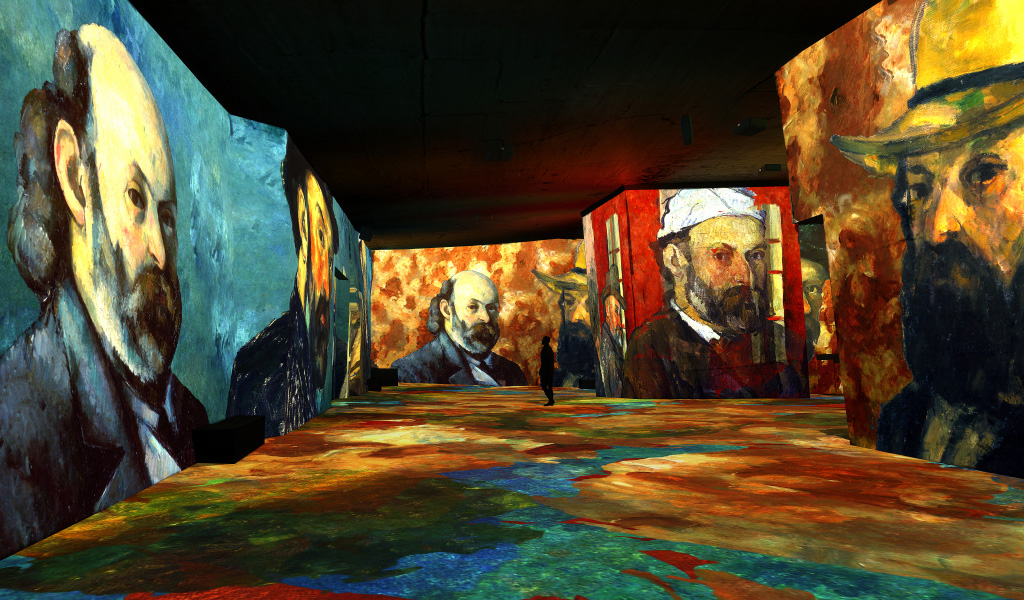
Simulation © Culturespaces / CutbackThe visitors are then immersed in nature, under the vast canopy of the trees, forests, parks, and gardens where the bathers can be seen, ending with the Cézannian representation of nature par excellence: Bibémus and l’Estaque, culminating in the Mont Sainte-Victoire. Dismissing the need to produce works that are immediately pleasing to the eye, his paintings are also deeply and completely sincere, conveying the artist’s uncertainty and passion. Visitors will view representations that reflect the artist’s personal life: the self-portraits that capture his inner torment, the sobriety that resulted from the slow pace of daily life in Aix-en-Provence, and the intimacy of his studio.
The energetic brushstrokes, the use of paint and its evolution, the continuing presence of nature, the suspension of time, the development towards an abstract reality of forms and colours … Cezanne’s oeuvre attests to this multifaceted pictorial style. Following the theme of nature, Provence, and the Mont Sainte-Victoire, ‘Cezanne, the Master of Provence’ takes visitors on a journey into the heart of the artist’s major works.
It will take some patience to admire the rich collection of the master Cézanne exhibited at the Carrières de Lumières beginning March 4, 2021. The provincial painter’s biggest masterpieces including his still lifes with apples, his historical scenes, his melancholic self-portraits, Les joueurs de cartes and Les grandes baigneuses will all fly before the viewer’s eyes in the exceptional immersive show within the Carrières de Lumières. This hypnotic dive into the sensitive and pioneering impressionism of the father of modern art is already promising to be one of the most highly anticipated exhibits of 2021.
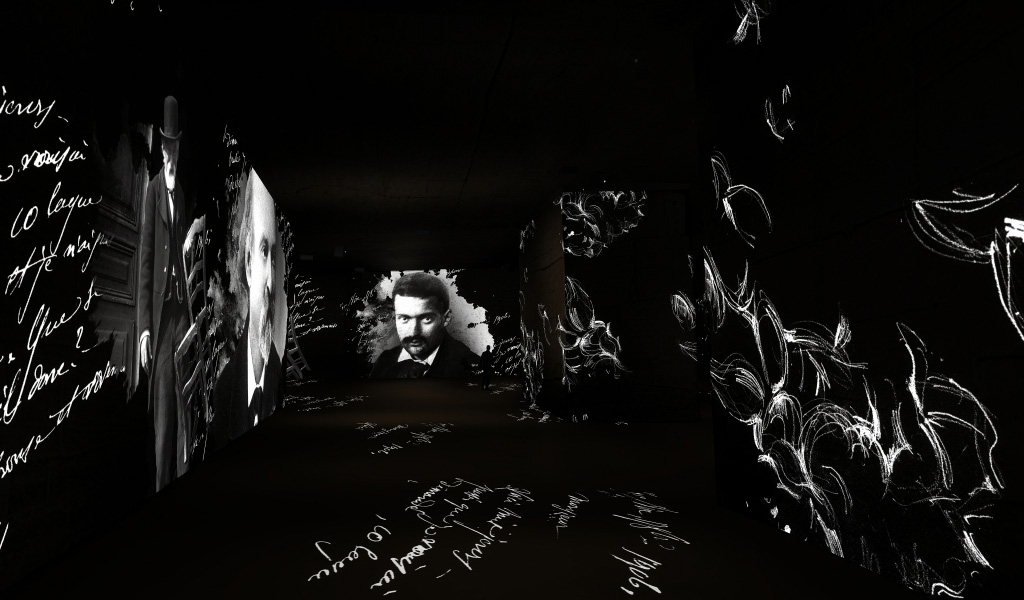
Simulation © Culturespaces / CutbackCézanne and the Provence
19 January 1839: Birth of Paul Cezanne at 28 Rue de l’Opéra, in Aix-en-Provence.
1852–1858: Paul Cezanne is a student at the Collège Bourbon, where he becomes a friend of Emile Zola and Jean-Baptiste Baille.
1857: He enrols in free drawing classes at the École Municipale Gratuite de Dessin.
1859: Paul Cezanne enrols at the Law School in Aix. His father acquires the Jas de Bouffan estate in Aix.
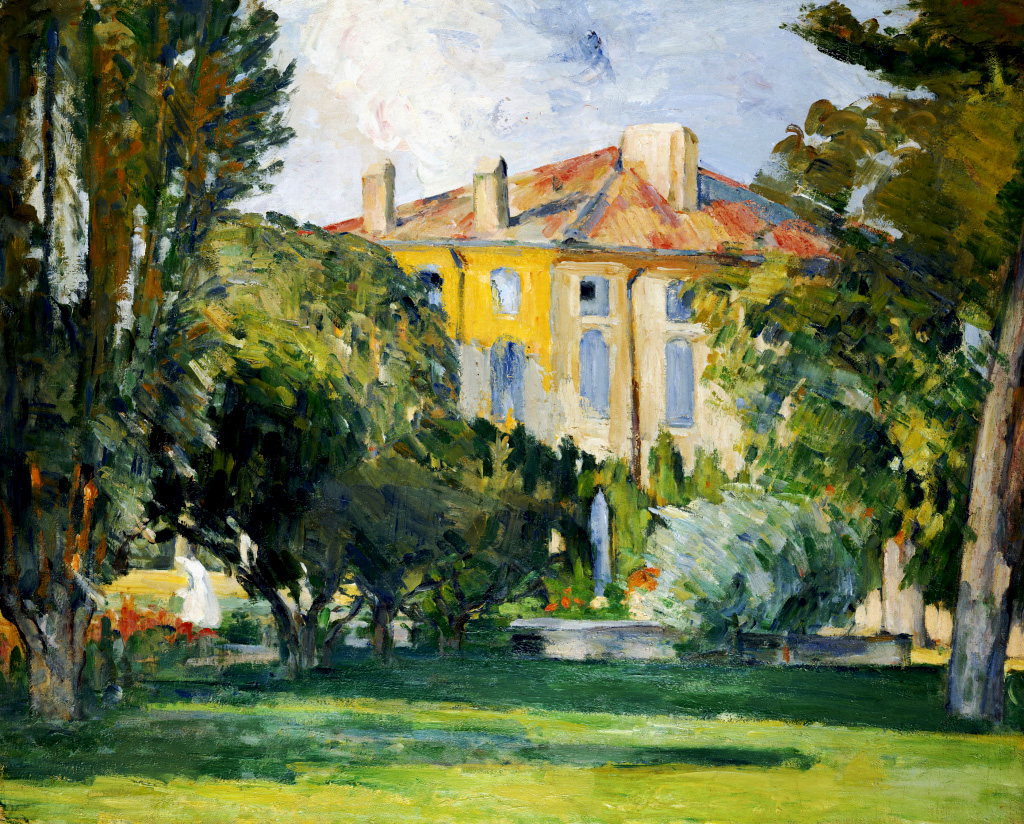
Paul Cezanne, La Maison du Jas-de-Bouffan, 1882-85, huile sur toile, collection privée, Photo © Christie’s Images / Bridgeman Images
1861: He abandons his law studies. He stays in Paris for the first time, where he meets Zola and Pissaro at the Académie Suisse.
1863: He exhibits his work at the Salon des Refusés and he works at the Académie Suisse, where he regularly frequents Pissaro, Guillaumin, Guillemet, and Oller; he copies works in the Musée du Louvre.
1864: His work is rejected by the Salon and the same thing happens several years running. He stays at l’Estaque near Marseille.
1865: After spending the year in Paris, where his work is rejected by the Salon, he returns in the summer to Aix, where he becomes a friend of Valabrègue.
1866: In Aix, in the autumn, Cezanne paints a whole series of works with a palette knife.
1869: In Paris, he meets Hortense Fiquet, who becomes his girlfriend.
1872: Birth of Paul, the son of the artist and Hortense. In 1872, after living between Paris and Aix-enProvence, Cezanne moves to Dr Gachet’s house in Auvers-sur-Oise. Working with Camille Pissarro, he studies technique and creates his first Impressionist paintings.
1874–77: He takes part in the first and third Impressionist exhibitions. Misunderstood by the public, he decides to break away from the Parisian Impressionists and returns to his native Provence.
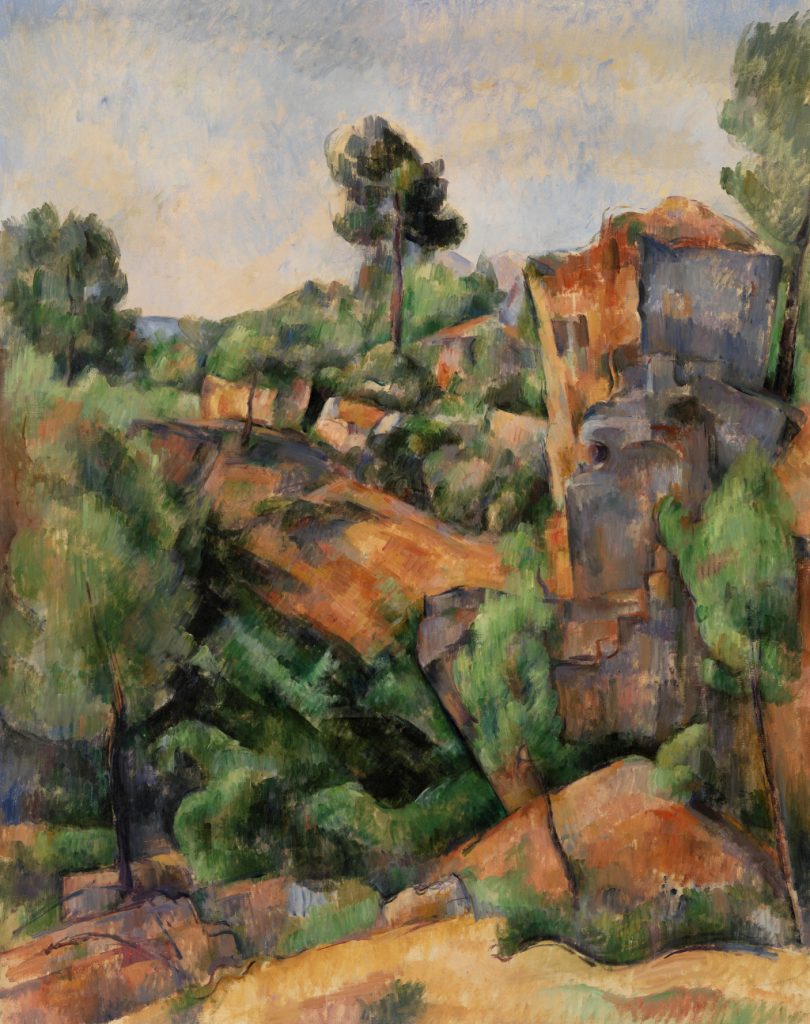
Paul Cezanne, Bibémus Quarry, circa 1895, oil on canvas, 92.1 x 73.3 cm, The Barnes Foundation, Philadelphia, Pennsylvania, USA, © Bridgeman Images
1882: He is admitted to the Salon for the first time in his career.
1883: He meets Monet and Renoir in the Midi.
1886: After the publication of Zola’s L’Oeuvre, Cezanne splits up with his former friend. He marries Hortense in April. The artist’s father passes away in October.
1895: From Aix, Cezanne goes to Mont Sainte-Victoire and the Bibémus quarries. The dealer Vollard holds the first solo exhibition devoted to Cezanne in his gallery, comprising 150 of his works, including The Card Players. This retrospective meets with great success.
1901: The painter acquires land on the Chemin des Lauves, where his studio is built.
1902: Ambroise Vollard visits Cezanne in Aix. The painter learns of Zola’s death.
1905: Cezanne exhibits works at the Salon d’Automne.
23 October 1906: Cezanne passes away in Aix.
1907: The Salon d’Automne devotes a posthumous respective exhibition to Cezanne, in which 56 of the artist’s works are presented.
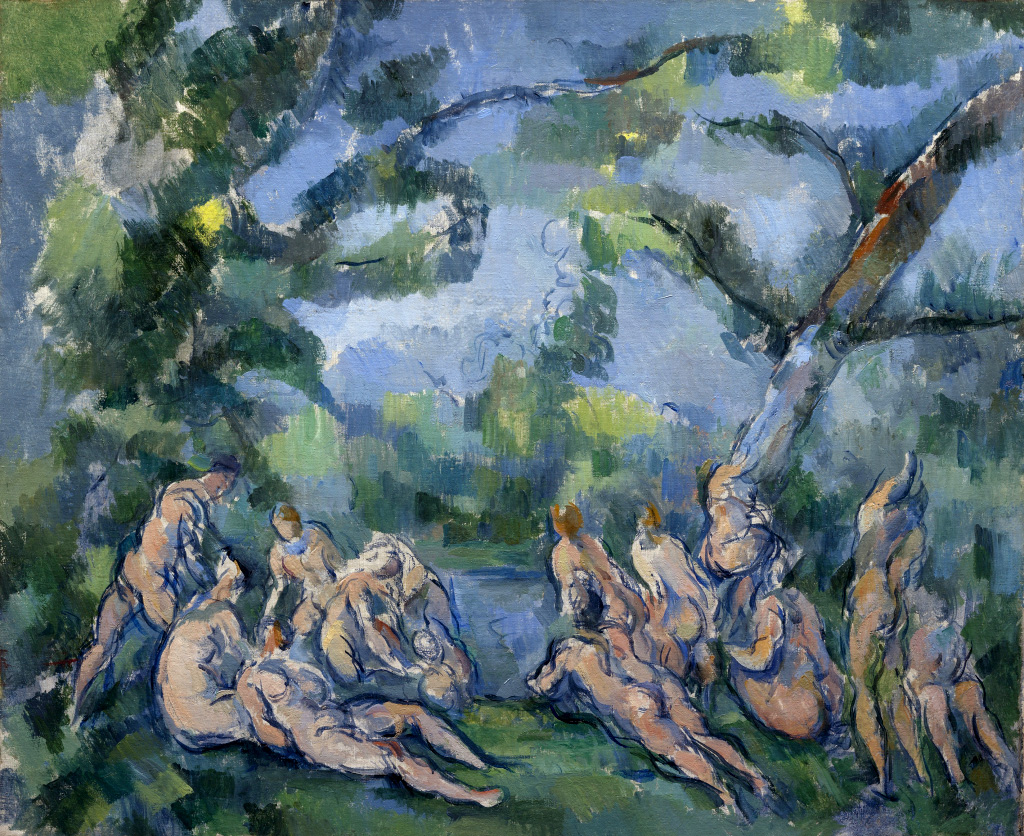
Paul Cezanne , Bathers, 1899–1904, oil on canvas, 51.3 x 61.7 cm, The Art Institute of Chicago, Illinois, USA © Amy McCormick Memorial Collection/Bridgeman Images Boston, Museum of Fine Arts, USA © akg-imagesCezanne, the Master of Provence
From 4th March 2021 to 2nd January 2022
Carrières de Lumières, Route de Maillane, 13520 Les Baux-de-Provence France www.carrieres-lumieres.com
